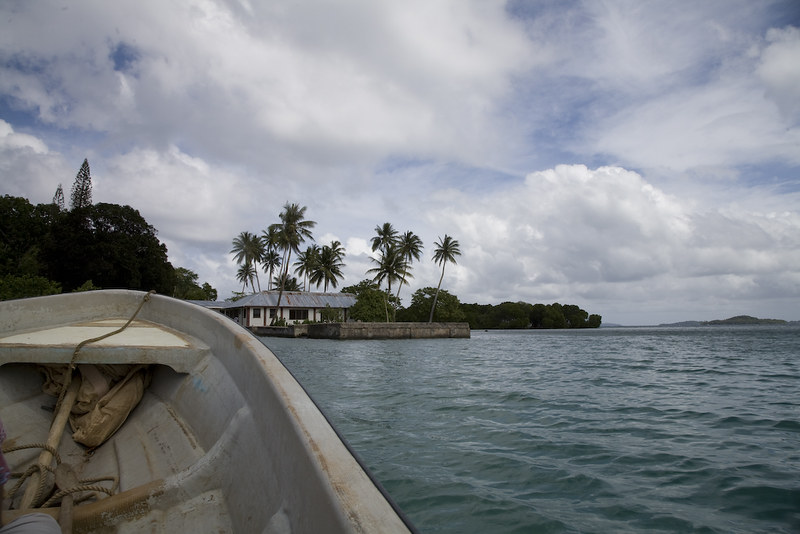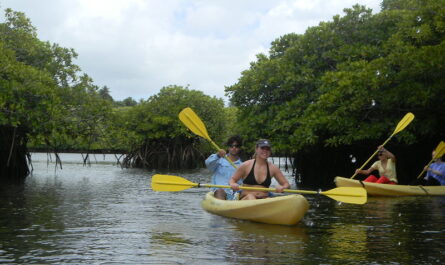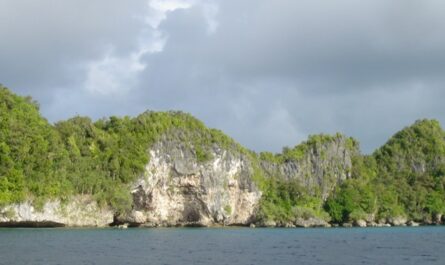In the tranquil expanse of the Pacific lies Chuuk Lagoon, a treasure trove of history submerged beneath its shimmering waters. Once a bustling hub of Japanese naval operations during World War II, this lagoon, also referred to as Truk Lagoon, is now revered as one of the most extraordinary underwater museums in the world. Its relics, including sunken ships, warplanes, and scattered artifacts, serve as solemn reminders of a pivotal moment in history.
Today, Chuuk Lagoon not only offers a profound connection to the past but also captivates divers with its vibrant marine ecosystems. This article explores the story of Chuuk Lagoon, its historical significance, and its dual identity as a site of remembrance and ecological wonder.
1. Geography and Strategic Importance of Chuuk Lagoon
A Natural Maritime Haven
Chuuk Lagoon spans over 2,100 square kilometers, enclosed by an extensive coral reef. The lagoon’s geography provides calm, protected waters, making it an ideal harbor. Its surrounding islands, rich with lush greenery and volcanic landscapes, add to its picturesque allure. However, its strategic position in the western Pacific made it a target during World War II.
The Japanese Naval Stronghold
During the war, Chuuk Lagoon was fortified by the Japanese military, becoming a critical base for naval and air operations. Dubbed the “Gibraltar of the Pacific,” it hosted warships, submarines, and supply depots, playing a key role in Japan’s campaigns across Southeast Asia and the Pacific.
2. Operation Hailstone: A Turning Point
In February 1944, Allied forces launched a surprise attack on Chuuk Lagoon, codenamed Operation Hailstone. This meticulously planned offensive aimed to cripple Japan’s military stronghold and shift the momentum of the Pacific War.
Details of the Assault
- Coordinated Air and Sea Strikes: Over two days, waves of bombers and torpedo planes targeted Japanese ships, aircraft, and infrastructure.
- Devastation: More than 50 vessels and 250 aircraft were destroyed, leaving the lagoon littered with wreckage. Thousands of Japanese personnel perished.
Impact on the War
The destruction rendered Chuuk Lagoon unusable as a military base, forcing Japan to withdraw its fleet. The Allied victory marked a turning point, paving the way for further advances in the Pacific.
3. The Ghost Fleet: A Diver’s Paradise
The remnants of Operation Hailstone now rest on the lagoon floor, creating a unique underwater museum. These wrecks, collectively known as the “Ghost Fleet,” attract divers from around the world.
Fujikawa Maru
Once a cargo vessel, the Fujikawa Maru now lies adorned with coral and marine life. Its holds contain disassembled fighter planes, while its deck guns are encrusted with vibrant coral.
- Highlights: Fighter plane relics, vivid coral reefs.
- Diving Level: Intermediate.
San Francisco Maru
Nicknamed the “Million Dollar Wreck,” this ship offers a glimpse into wartime logistics, with tanks, mines, and ammunition preserved in its holds. Resting at 63 meters, it challenges even experienced divers.
- Highlights: Tanks on deck, cargo holds brimming with artifacts.
- Diving Level: Advanced.
Shinkoku Maru
This former oil tanker is now a thriving reef, home to diverse marine species. Its medical bay, complete with bottles of wartime medicine, adds a haunting touch.
- Highlights: Coral-encrusted medical bay, abundant marine life.
- Diving Level: Accessible to all divers.
Betty Bomber
This Japanese aircraft rests in shallow waters, offering a glimpse into aviation history. Its intact fuselage and proximity to the surface make it ideal for beginners.
- Highlights: Well-preserved aircraft structure, vibrant fish.
- Diving Level: Beginner-friendly.
4. Marine Ecosystems: Life Thriving Among Wrecks
The wrecks of Chuuk Lagoon have evolved into artificial reefs, supporting a rich tapestry of marine life. This coexistence of history and biodiversity sets Chuuk apart from other diving destinations.
Coral Colonization
Soft and hard corals blanket the wrecks, creating underwater gardens that provide habitat for various species. These reefs are a haven for small fish, crustaceans, and invertebrates.
Notable Marine Species
- Small Creatures: Nudibranchs, shrimp, and gobies.
- Pelagic Fish: Schools of tuna, snapper, and barracuda.
- Predators: Reef sharks and rays frequently patrol the area.
5. Challenges and Conservation Efforts
While Chuuk Lagoon offers unmatched diving experiences, its historical and ecological significance faces growing threats.
Environmental Concerns
- Corrosion: The wrecks are deteriorating due to prolonged exposure to saltwater.
- Oil Leaks: Fuel and hazardous materials pose risks to the lagoon’s fragile ecosystem.
Tourism Pressure
Increased diving activity can inadvertently damage the wrecks and disturb marine life. Sustainable tourism practices are essential to preserve Chuuk’s underwater treasures.
Preservation Initiatives
Local organizations are working to document and protect the lagoon’s historical artifacts. Divers are encouraged to adopt eco-friendly practices, such as avoiding physical contact with wrecks and using reef-safe sunscreen.
6. Planning Your Dive Adventure
Chuuk Lagoon caters to divers of all skill levels, but preparation is key to a successful trip.
Best Times to Visit
- Dry Season (December-April): Offers calm seas and optimal visibility.
- Wet Season (May-November): Though rain is frequent, diving remains enjoyable year-round.
Essential Gear
- Diving Equipment: Technical gear for deep dives.
- Photography Tools: Cameras with wide-angle lenses to capture the wrecks’ grandeur.
Top Dive Operators
Reputable operators provide guided tours, ensuring a safe and enriching experience.
7. Beyond the Wrecks: Exploring Chuuk’s Islands
While the lagoon’s underwater treasures are its main draw, Chuuk’s islands offer cultural and natural experiences.
Cultural Encounters
Visitors can participate in traditional dances, learn about Chuukese canoe-building, and enjoy local storytelling sessions.
Island Adventures
Hike through lush rainforests, discover hidden waterfalls, or relax on pristine beaches. The outer islands offer tranquility and unspoiled beauty.
Local Cuisine
Chuukese dishes, such as taro, breadfruit, and freshly caught seafood, provide a taste of Micronesian culture.
8. Reflection and Remembrance
Chuuk Lagoon’s wrecks are not just diving sites—they are memorials that honor the lives lost during World War II. Exploring these relics offers a poignant connection to history, reminding visitors of the sacrifices made during a time of global conflict.
Conclusion: A Unique Blend of History and Nature
Chuuk Lagoon is a destination where the past meets the present. Its sunken fleet serves as a testament to human resilience, while its thriving marine life showcases the power of nature to reclaim and renew. For divers, historians, and travelers, Chuuk offers an unparalleled journey into the depths of history and the wonders of the Pacific.
By diving responsibly and supporting conservation efforts, visitors can ensure that Chuuk Lagoon remains a treasure for generations to come.



